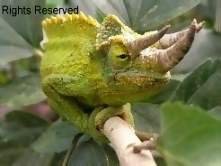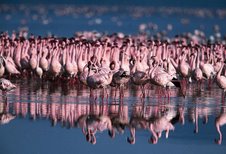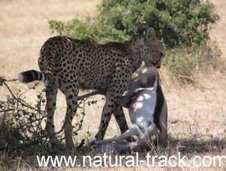The lake baringo is in the northern part of the Great Rift Valley with a surface area of 168 square kilometers and elevation of about 3,180feets above the sea level. The lake is fed by several rivers, Molo, Endao, Perrkera and Ol arabal, and has no obvious outlet but it has been believed to have underground outlet in the northern part of the lake. The waters are assumed to seep through lake sediments into the faulted volcanic bedrock. It lies off the beaten track in a hot and dusty setting bed rock. It is a critical habitat and refuge for more than 500 species of birds and fauna. A Goliath heronry is located on a rocky island known as Devil Island.
The tugen hills, an uplifted
faulted fault block of volcanic and metamorphic rocks, lies west of the lake
which runs for approximately twenty kilometers long which enhance the best
attraction as a view point to the lake and all surroundings. The laikipia
escarpment lies to the east. Water flows into the lake from the Mau hills and
Tugen hills. The lake also provides an invaluable habitat for five fresh water
fish species namely: Tilapia, cat fish, lung fish, Libelous and black
barbas.Tilapia is endemic to the lake.
The Africa lung fish which
was introduced to the lake and which now provides the majority of fish output
from the lake. The lake is commonly turbid with sediments, partly due to
intense soil erosion in the catchments especially on the south of lake. Lake fishing is important to the local social and
economic development. The most fishermen round the lake are the IIchamus
community who normally lives in the islands and at the southern shore of the
lake.
The lake has several small
islands:Ol kokwa, Devil island, Rongena island,Parmolok island,lokoros
island,kopuso island and Longicharo island. The longest island being Ol Kokwa
Island is an extinct volcanic which is located at the centre of the lake? The
island measuring five kilometers in length and one kilometer across which is a
bout five hundred hectares of land. A group of hot springs discharge a long the
shoreline north –eastern corner of the
island and has several fumarole,some of which have precipitated sulphur
deposits.Ilchamus community inhabit this island where five hundred and seventy
people lives here. Both women and men they practice fishing as their main
economic activity. They used a simple raft made of balsa wood as a mode of transport.
At this island, a school, dispensary, and fish market is available here.
The Parmolok Island is the second
largest island of about ninety hectares of land. The island is being owned by
Ilchamus Moran who intended to marry five wives and blessed to have twenty
seven children. It is quite unique island due to vegetations of medicinal
plants .The rocks arrangement of this island facilitate good view .He keeps
Goats, Sheep ,Cattle and poultry Apart from this he does fishing to earn a
better living for the family
TERMITE HILL
Termite worker build and
maintain nests which house the colony. these are elaborate structure made using
a combination of soil, mud chewed wood or cellulose, saliva and faces nest has
many functions such as providing a protected living space and water
conservation. There are many nursery chambers deep within the nest where eggs
and first larvae are tended. Nests are punctuated by a maze of tunnel-like
gallery that provides air conditioning and control carbon dioxide and oxygen.
The termite hill has a long
hollow chimney usually grows longer. Strong rainfall and human beings destroy
this chimney. In most cases chimney is built slightly narrow as it grows up to
facilitate security for the entire insects beneath the earth crust. Additional
most chimneys bend towards north way
and south way to escape direct sunlight.
THE
QUEEN
A primary queen has a great capacity to lay
eggs in some species, The mature queen has a greatly distended abdomen and may
produce 20,000 to 30,000 eggs a day .The abdomen increases the length to
several times more than before mating and reduces her ability to move freely
.And attendant workers provide assistance. When the queen mates once with the
male and stores the gametes for life, as the male termites dies shortly after
mating.
The winged caste as the
reproductive caste and they are only termites with well-developed eyes .In a
distinct dry season, the winged caste leave the nest in a large swarms after
the first soaking rain of the rainy season. After landing at an acceptance
site, where they mates and attempt to form a nest in damp earth.
WORKERS
Workers termites undertake
the labor of food storage, brood and nest maintains and some defense duty. Workers
help in the colony for the digestion food.
The soldiers has behavioral
specialization providing strength which are primarily useful against termites
attacks .Many soldiers have jaws so enlarge, they cannot feed themselves but
instead, like juvenile are fed by workers. Simple holes in the forehead exuding
defensive secretions are a feature of the family. Soldiers are usually blind.
DIET
Termites are generally group
according to their nest and feeding habitats All termites eats celluloses in
its various forms as plant fibre. Cellulose is a rich energy source but remains
difficult to digest.









No comments:
Post a Comment